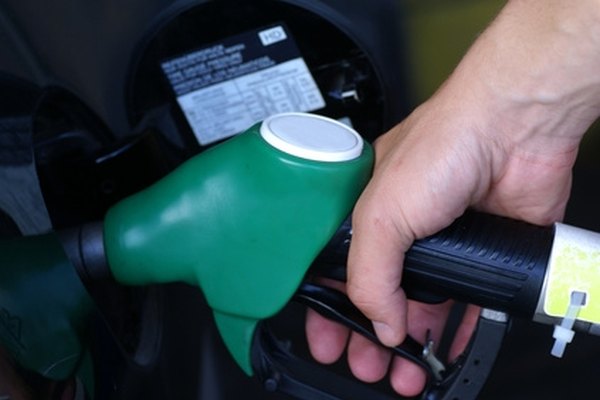A punctured gas tank can be a major setback, leaving you stranded or facing potential safety hazards. Fortunately, with a bit of know-how and the right tools, you can fix a hole in your gas tank yourself. This comprehensive guide will take you through the step-by-step process of repairing a gas tank hole, ensuring a safe and reliable fuel system for your vehicle.

Image: www.reddit.com
Gas tanks are essential components of a vehicle’s fuel system, storing and supplying fuel to the engine. However, due to various factors such as road debris, corrosion, or accidents, gas tanks can develop holes or leaks. This can compromise the integrity of the fuel system, leading to fuel loss, performance issues, or even fire hazards.
Step 1: Safety Precautions
Before starting any repairs, prioritizing safety is paramount. Gas tanks contain flammable fuel, so it’s crucial to take appropriate precautions:
- Park your vehicle on a level, well-ventilated surface away from any sources of ignition.
- Disconnect the battery to prevent sparks.
- Depressurize the fuel tank by removing the gas cap and allowing any pressure to escape.
- Wear safety glasses, gloves, and proper clothing to protect yourself from fuel and debris.
Step 2: Locating and Preparing the Hole
Once safety precautions are taken, locate the hole in the gas tank. Rinse the area with water to remove any debris or dirt. Gently wipe away any fuel residue with a clean rag.
Determine the size and shape of the hole. If the hole is small (less than 1/4 inch), a gas tank repair kit may suffice. For larger holes, you may need to use a metal patch or weld the tank.
Step 3: Using a Gas Tank Repair Kit
Follow the manufacturer’s instructions carefully when using a gas tank repair kit:
- Apply degreaser to the area around the hole and let it dry.
- Insert the patch or plug into the hole and press it firmly into place.
- Smooth out the patch and allow it to cure according to the manufacturer’s specifications.

Image: itstillruns.com
Step 4: Applying a Metal Patch
For larger holes, a metal patch can be used:
- Cut a piece of metal patch slightly larger than the hole.
- Apply a thin layer of epoxy or sealant to the patch and the area around the hole.
- Align the patch over the hole and press it into place.
- Secure the patch with bolts or rivets.
Step 5: Welding the Tank
If the hole is too large or in an awkward location, welding may be necessary:
- Clean the area around the hole and remove any rust or corrosion.
- Position the tank securely and weld the hole using a MIG or TIG welder.
- Reinforce the weld by adding a layer of epoxy or sealant.
Step 6: Testing and Reassembly
Once the hole is repaired, it’s important to test the gas tank for leaks:
- Pour a few gallons of fuel into the tank.
- Inspect the area around the repair for any leaks or seepage.
- If no leaks occur, tighten the gas cap securely.
Reassemble the fuel system by reconnecting the battery, fuel lines, and other components. Start the engine and check for any leaks or performance issues.
How To Fix A Hole In A Gas Tank
Conclusion
Repairing a hole in a gas tank can seem daunting, but following these step-by-step instructions carefully can save you time and expense while ensuring the safety and reliability of your vehicle. Always prioritize safety when handling fuel and consult with a mechanic if you are unsure about any procedures.
With the right tools and a bit of know-how, you can effectively fix a gas tank hole, restoring the functionality of your vehicle’s fuel system and getting back on the road with confidence.